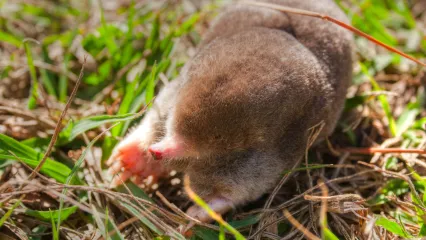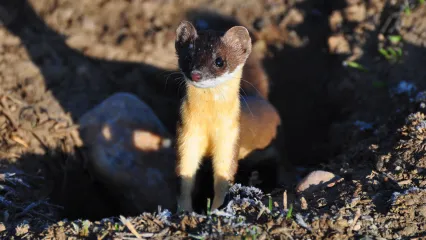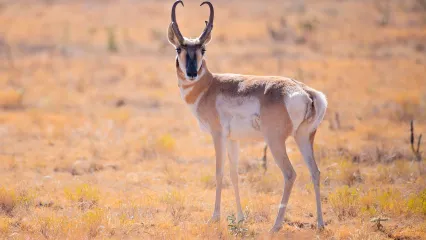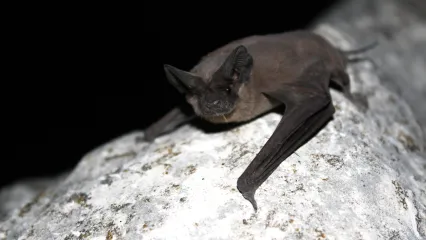
Description
Built for life underground, the eastern mole twists through their tunnels shoveling dirt around its body with blocky front feet. The pointed nose, tiny eyes and missing external ears are other indicators of a belowground lifestyle. A layer of skin covering the eyes and small ear openings sheltered by fur help prevent dirt from covering the eyes and ears. The broad, webbed feet are wider than they are long, and are clawed on both front and hind feet. The short tail is less than a quarter of the body length and is sparsely haired. The velvety gray to brown fur is often related to the soil type with gray individuals found in the west and darker individuals found in the east.
Size
Approximately 6.75 inches in total length, with 1.25 inch tail.
Habitat
The eastern mole has been documented across much of the body of the state, in areas where the soils allow for burrowing. Areas with deep sand or clays are typically avoided.
Life Cycle
Moles spend much of their life underground, tunneling extensive burrows. Tunnels used for gathering food are the most recognizable by people, often forming ridges on the surface. Deeper tunnels are used for sleeping and nest chambers. Eastern moles feed on a variety of invertebrates including earthworms, beetles and other insects. Mating occurs in late winter or early spring and two to five hairless young are born one to two months later. Though considered a pest by some, moles provide important ecological services by feeding on insects and aerating the soil.


